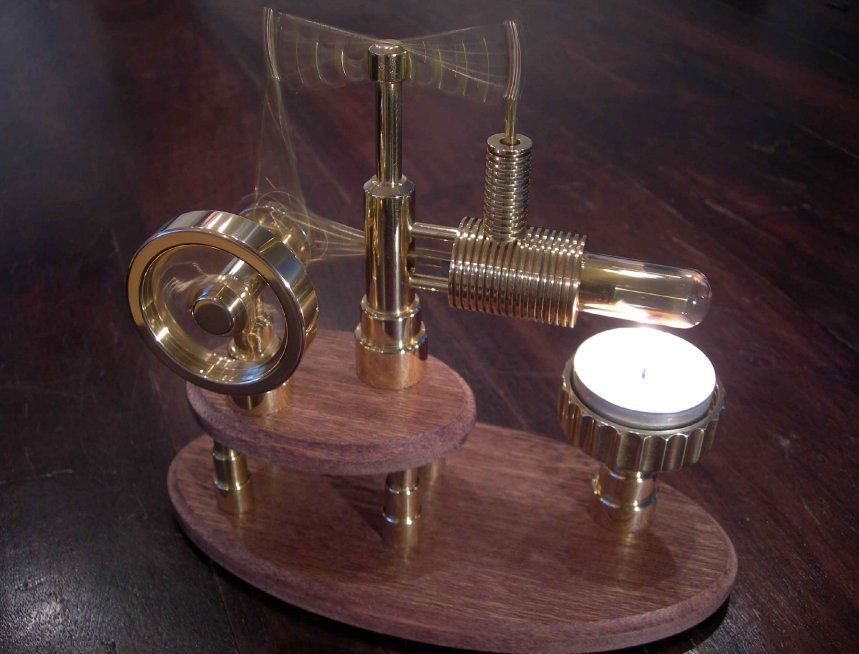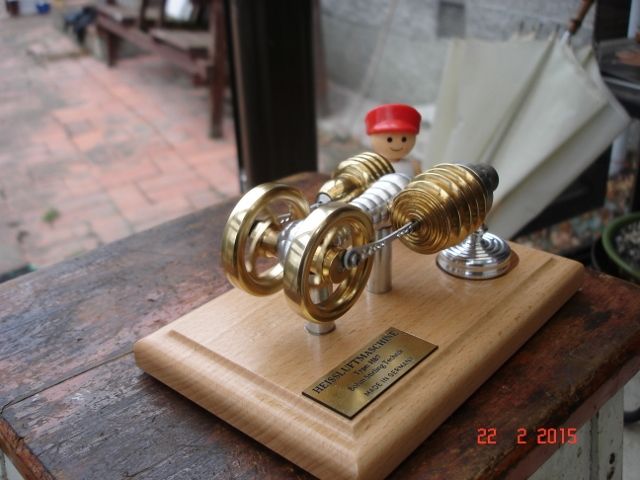I substituted a whole new work cylinder and work piston assembly on the engine today. This piston was a slightly looser fit and more free running while still giving a decent seal. I am getting ten revolutions with no heat applied. But it still will not run.
One thing I did not notice on the youtube video was how slow the engine runs. It obviously has to be very freewheeling as there is not much force produced ; it is very unlike a steam engine.
I am hoping the new bearings will make a difference when they arrive (maybe next week) but I doubt that they will improve on the current 10 revolutions. I will try them out when they arrive though as I am running out of ideas.
I had intended to make a new D. cylinder cover (part 24) in case I am getting leakage but I am having second thoughts about this. The D. piston rod is 2.93mm and the centre hole was reamed using a 3H7 reamer so this should be as good as it gets. Anyway, I do not have a working tailstock on my lathe at the moment so I cannot make a new part.
I am still not too sure about sealing the cylinder holders (frames) with Hylomar. They are such a tight fit that even a small amount will ooze everywhere and perhaps block that connecting hole between the two cylinders. You just have no way of knowing once everything is tightened up what has happened in there.
One other thing I can try is to make gaskets for all the cylinder covers. I have the correct gasket paper so this might be worth doing. Why do steam engines need gaskets but Stirling engines do not : I would have thought a good seal is even more important on a Stirling engine ?
Edited By Brian John on 20/02/2016 06:41:36
Gordon Tarling.



 It might make an interesting project for Brian at some point. Mix of hand work and finding some way of holding parts on the lathe to enable the use of a slitting saw. It's by J Jonkerman. There is a bit of milling as well but I suspect that could be don on a face plate really or a vertical slide of course. Plans are on the web.
It might make an interesting project for Brian at some point. Mix of hand work and finding some way of holding parts on the lathe to enable the use of a slitting saw. It's by J Jonkerman. There is a bit of milling as well but I suspect that could be don on a face plate really or a vertical slide of course. Plans are on the web.




